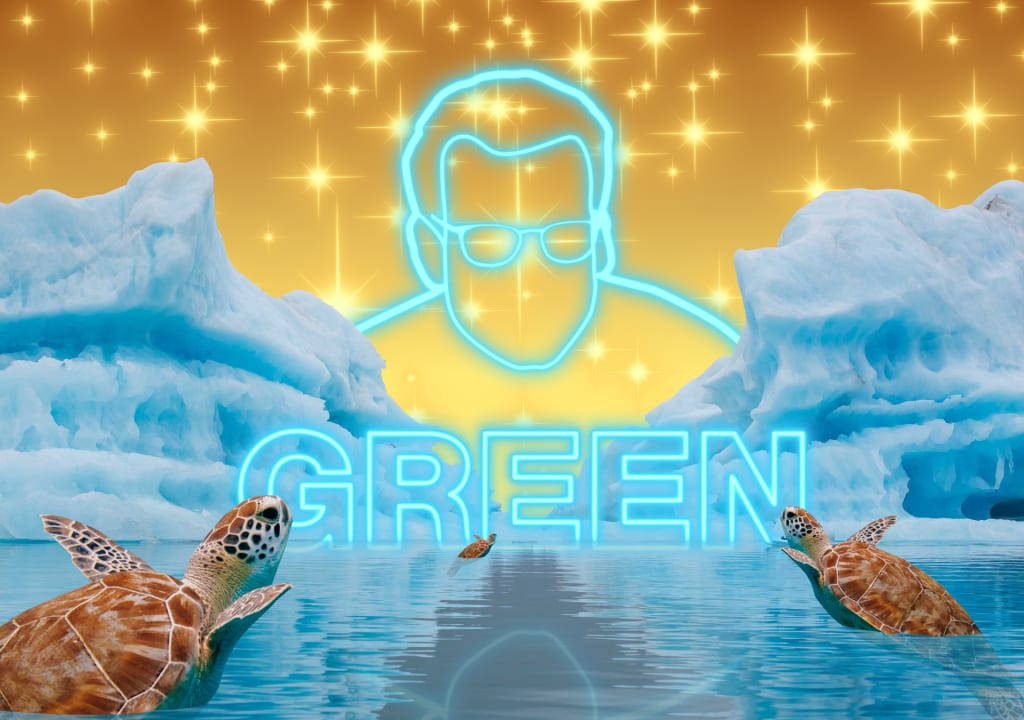How to Write Like John Green
4 writing lessons from the bestselling author of coming-of-age books

John Green is a forever teenager stuck in the body of a forty-something years old man with serious glasses and a warm smile. He’s a likeable character, an objectively successful writer, and a good guy. At least, the persona Green’s built with his writing and online activity gives a nice guy vibe.
It can be genuine.
It can be too good to be true.
I don’t know.
Does it matter when we’re trying to learn how to write like John Green?
His writing is good enough to attract a considerable fandom — that’s what we are looking for here.
John Green’s books…I read a few of them and found that activity decently relaxing. I’ll say one important thing right away. Green’s most famous novel The Fault in Our Stars…I haven’t read it. I’m a little bit scared of cancer, and reading about it can result in unnecessary doctor appointments. The book is probably decent. Is it decent? Tell me please in the comments. I hope things I picked up from Green’s other books hold true for that very best bestseller book of his.
Okay.
How to write like John Green?
Lesson one — write a coming-of-age story
Every fiction novel of Green’s — from the debut Looking for Alaska to the latest Turtles All The Way Down — is a coming-of-age story. Something in those stores drives him to write them over and over again. Is Green perpetually trying to come out of age? Is he trying to reflect on some boyhood trauma of his? Does he just find teenagers lit and adults basic? Only John Green knows what he’s doing there.
What we readers know for sure — John Green writes a readable coming-of-age novel. A novel usually follows the following patterns: 1) The protagonist is a slightly introverted, slightly nerdy teenage boy (even when he’s a girl); 2) He has a mystery to solve — it can be an internal struggle or an external event (like death, so many deaths); 3) the mystery unravels, the protagonist comes out of age and feels something quite out of his age — profound and life-changing. Too many times that something has something to do with a girl. Can a boy think about anything else but a girl? The answer is negative most of the time, apparently.
How to write like John Green?
Write about that time you really liked a girl, but she did something grossly negligent and your heart is now broken, poor boy.
What to read to write like Green — coming-out-of-agely
Looking for Alaska — about a boy who’s looking for a girl, and not for some remote snowy state.
Every other story.
Lesson two — write about yourself
All of Green’s protagonists are clearly different teenagers. When you’d read more than one of his novels, however, those boys melt into one single teenager — John Green. Green’s omnipresence in his characters is very…present. Their life experiences grow from the green soil. The plants do come out looking genuine and fairly relatable — even if events around them are slightly groundbreaking and anecdotic.
How to write like John Green?
Write about things you’ve done and experienced — but with a pinch of epic salt.
What to read to write like Green — self-fully
Paper Towns — again, about a boy who’s looking for a girl, this time quite literally and through the whole novel.
An Abundance of Katherines — about dating too many girls named Katherines before you finally find Lindsey.
Lesson three — write about the other self
Maybe I’ve exaggerated something for a red word. Maybe not all of Green’s protagonists melt into one. Maybe some of them are quite distinct. Maybe those protagonists least like Green (still recognisable very much like Green) are, actually, his best characters. I’m talking about my favourite novel — Turtles All the Way Down.
It’s a good book about a teenager struggling with something less straightforward and less romantic than chasing a girl. Parents, if your kid has mental health issues, or if you want your kid to understand what other kids might be going through — give them this book.
It’s also the book I would recommend to anybody, not just out of being nice.
How to write like John Green?
Write about what other people do and experience — but, again, with a pinch of epic salt.
What to read to write like Green — other-fully
Will Grayson, Will Grayson — about coming out of age yet coming together.
Turtles All the Way Down — about OCD, anxiety and the human microbiome.
Lesson four — write with compassion and simplicity
The thing that’s most valuable about John Green’s writing is that it’s inherently not evil and pessimistic. It does give hope that there’s a life you could tolerate on the other side of coming-of-age — even if your current situation feels hurtful and depressive.
To entertain the young and lend them a helping, compassionate hand that also bears some simple-to-understand fruits of wisdom are noble causes. I applaud John Green for putting his warm green heart out to make young adults feel less lonely and abandoned. Young adults seem to receive that gift with genuine affection and gratitude.
What else can I say?
The warmth and simplicity are there, in every Green’s book — you can pick any to understand the secret behind his success and learn a thing or two about relatable, modern writing.
How to write like John Green?
Write about something that lifts your heart up and doesn’t drop it to the ground floor.
I’m done.
Thank you for reading till the end.
Be Green.
About the Creator
Anton Kutselyk
Follow me on Medium: https://medium.com/@antonkutselyk






Comments
There are no comments for this story
Be the first to respond and start the conversation.